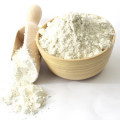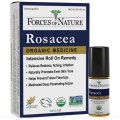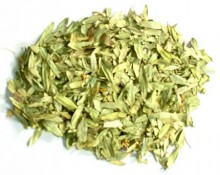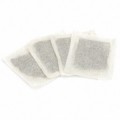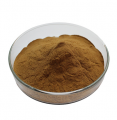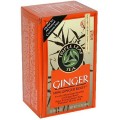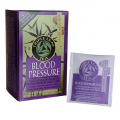 Loading... Please wait...
Loading... Please wait...- Home
- About Us
- Shipping, Returns & FAQ's
- Contact Us
-
For Your Information
- Canadian Customers Have a Choice if Shipping Via UPS
- Aura Cacia Homemade Aromatherapy Recipes
- Bella Nella Altered Art & Paper Crafts Blog
- Forms of Herbal Preparations
- Laundry Tips To Conserve Energy Blog from The Laundress
- The Story of Frontier Natural Products Co-Op
- Sovereign Silver Hydrosol and Aloe Protocol Stops Downward Spiral of Gut Dysbiosis
- Disclaimers
- Recommended Links
- RSS/Recent News
- The Story of Typhoon Housewares
- Reviews/Testimonials
- Raw Ingredients for Mfg
- Home
- Supplements
- Herb, Single
- Capsules/Tablets
- Senna Leaf Bulk/Tea/Caps/Extract
- Home
- Supplements
- Digestive
- Laxatives
- Senna Leaf Bulk/Tea/Caps/Extract
Senna Leaf Bulk/Tea/Caps/Extract
Product Description
Senna leaf has been traditionally used as an herbal favorite in Africa and Asia as a natural herbal laxative. It also promotes digestive system health.
For relief of occasional constipation (irregularity).* This product generally produces bowel movement in 6 to 12 hours.
People in northern Africa and southwestern Asia have used senna as a laxative for centuries. It was considered a "cleansing" herb because of its cathartic effect. In addition, the leaves were sometimes made into a paste and applied to various skin diseases. Ringworm and acne were both treated in this way.
Pharmacological Actions: Sennosides and a metabolite called rhein anthrone inhibit the absorption of water and electrolytes in the large intestine, which results in more pressure and volume of material in the intestines. In response, the colon produces contractions to relieve the pressure. At the same time, the amount of water and electrolytes in the intestine increases due to greater production of prostaglandin E2, a lipid that relaxes smooth muscles.
Senna is a short-term therapy for constipation that has been used in “mainstream” medicine since the 1950s. Studies show that sennosides improve transit time in the gut, which translates to more frequent and productive bowel movements. In terms of clinical practice, this is significant because it is often necessary to introduce laxatives to prevent or treat constipation in what is known as a “bowel protocol.” In short, this means coming up with a plan that includes therapeutic agents that will be both effective and well tolerated. According to a study published in the May 11, 2008 issue of the “Journal of Palliative Medicine,” senna therapy effectively provided relief for patients undergoing cancer treatment, even without the addition of a stool softener. Another study published in the May 2010 issue of the “American Journal of Obstetrics and Gynecology” showed that senna effectively stimulated bowel movements in patients recovering from pelvic reconstructive surgery.
Active constituents:
Senna contains hydroxyanthracene glycosides known as sennosides. These glycosides stimulate colon activity and thus have a laxative effect. Also, these glycosides increase fluid secretion by the colon, with the effect of softening the stool and increasing its bulk.1 Double-blind trials have confirmed the benefit of senna in treating constipation.2 3 Constipation induced by drugs such as the anti-diarrhea medicine loperamide (Imodium®) has also been shown to be improved by senna in a clinical trial.
Ayurvedic Applications:
Indications: constipation, inflammatory skin conditions, hypertension, obesity Senna is a strong purgative that should be taken with care and in proper dosage.
Senna is mainly for severe constipation, the constipation following a fever or for clearing Pitta from the small intestines.
Combinations:
It is best to combine Senna with aromatic, carminative herbs to increase palatability and reduce griping, for instance by using Cardamom, Ginger or Fennel.
Continued use beyond ten days is discouraged. If constipation is not alleviated within ten days, people should seek the help of a healthcare professional.
Characteristics and Constituents:
Leaves contain glycosides, sennoside A, sennoside B, sennoside C and sennoside D. Two naphthalene glycosides have been isolated frofn leaves and pods. Senna also contains the yellow flavonol colouring matter kaempferol, its glucoside kaempferin and isorhamnetin.
Actions and Uses:
Senna extract introduced into the lumen of the bowel through colostomy had no effect on the motility, though the same extract introduced with faeces or a culture of Escherichia coli stimulated peristalsis. Sublaxative doses of standardised senna fruit showed spasmolytic activity. Effective dose of piperazine for the treatment of threadworms and roundworms was substantially reduced by the addition of extract of senna. Water extract was found effective against Trichophyton purpurceum. Leaves and pods are used traditionally as purgatives, Topical use of the leaves for dermatosis is also not uncommon. Laxative effect of standardized senna fruit granules was compared with liquid paraffin or a mixture of liquid paraffin and magnesium hydroxide in fifty nursing mothers. Senna was more effective than the control treatment in overcoming puerpural constipation while the bowel habits of infants were not affected.Directions:
WARNINGS: Some people may experience an allergic reaction or cramps and diarrhea from ingesting senna leaf. Long-term use or high dosages can lead to potassium depletion and, in rare cases, an increased risk of fluid retention (edema), bone loss, and irregular heart rhythm. Do not use senna preparations if you are pregnant or nursing. This herb should not be given to young children or the elderly without medical supervision.
Senna should not be combined with licorice, which also depletes the body of potassium with long-term use. Due to an increased risk of toxicity, senna should not be used concurrently with digoxin, a heart medication made from digitalis (foxglove).
Do not use when nausea or vomiting are present unless directed by a doctor. Consult a doctor if you notice a sudden change in bowel habits that persists over 2 weeks. Rectal bleeding or failure to move bowels after use may indicate a serious condition. Discontinue use and consult a doctor.
Botanical Name: Cassia species, Senna alexandrina type species
Common Names: Khartoum Senna, India Senna, Egyptian Senna, Alexandrian Senna, Tinnevelly Senna. Note that senna is sometimes referred to in texts as “Cassia Officinalis,” but capitalization of the second part of the name indicates this is an apothecary term and not a botanical name as governed by the International Code of Botanical Nomenclature.
Origin: India/Egypt
Notes: Non-irradiated. Certified Kosher.
Please choose from our selection of various forms for this herb, i.e. cut & sifted is ideal for making teas, decoctions, teas, etc. Powders for mixing in liquids or producing capsules. If available, we also offer bulk vegetable capsules (575mg/cap) 100-500 caps in zip-lock bags and 1000 caps in canister; Liquid Extracts 1:4 (weight to volume ratio) in 18-20% USP grain alcohol with only organic, ecological or wildcrafted bio-active plants; Tinctures are made in accordance with the Homepathic Pharmacopoeia of the US using fresh plants in 1:10 ratio with pure ethyl alcohol USP 190 grain.
Read More About It
Forms of Herbal Preparations
The Herbal Medicine Chest by Sujata Bristow
The Book Of Herbs by Dawn Titmus (Editor), Thunder Bay Press
Herbal Prescriptions for Health and Healing: Your Everyday Guide to Using Herbs Safely and Effectively by Donald J. Brown, Don Brown
Scholarly Articles
ehow.com
Specifications may change without notice.
*FDA Disclaimer
Find Similar Products by Category
You Recently Viewed...
Currency Converter
Choose a currency below to display product prices in the selected currency.




